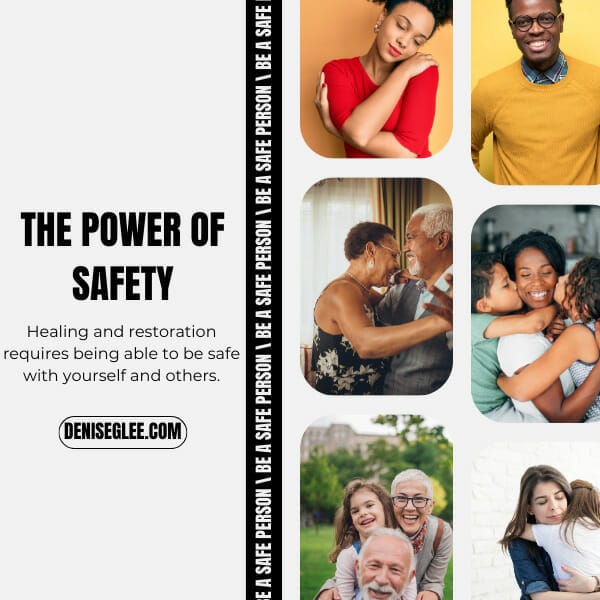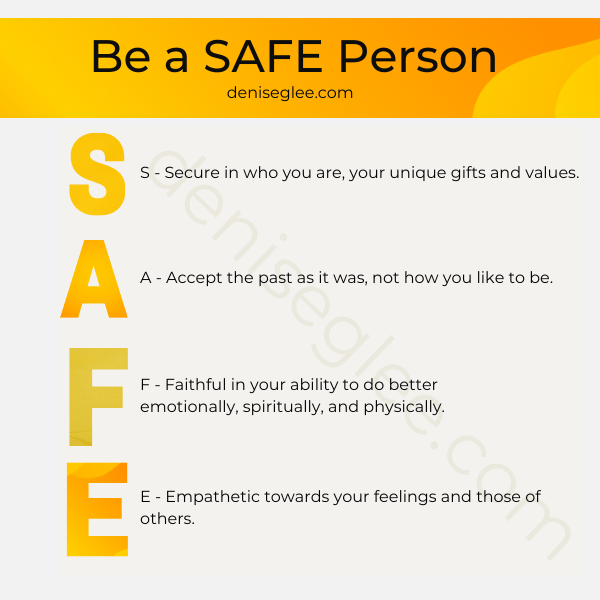
Healthy Communication: Dealing with Emotionally Unstable People
How do you deal with someone who is emotionally unstable? Perhaps they are easily angered, quick to yell, and their behavior is prone to being disruptive and easily frustrated.
Unfortunately, we cannot always isolate ourselves from such individuals as they may be our clients, team members, or even family members. However, living a successful life requires us to communicate with everyone, including those who may be difficult to deal with. Communication with others is called interpersonal communication.
As a life coach for entrepreneurs, I want to support you in navigating this and other communication challenges.
In this article, we will:
- Define an emotionally disabled person.
- Show how you can keep yourself and others safe when discussing difficult topics.
- Discuss healthy communication tips so that you can relate with individuals who may have limited emotional capacity.
Believe in yourself! It's not about avoiding people, it's about overcoming your fears. Don't let anxiety hold you back from forming connections with others, even when it feels tough.
Denise Lee Tweet
What is an emotionally disabled person?
An emotionally disabled person is an individual who experiences significant challenges in managing their emotions and coping with the demands of everyday life due to a mental health condition or emotional disorder.
Emotional disabilities can encompass a wide range of conditions and symptoms, including but not limited to:
1. Depression
People with depression may experience persistent feelings of sadness, hopelessness, and a lack of interest or pleasure in activities they once enjoyed. This condition can severely impact a person’s ability to function in daily life.
2. Anxiety Disorders
Conditions like generalized anxiety disorder, social anxiety disorder, or panic disorder can lead to overwhelming feelings of fear, worry, and anxiety that interfere with a person’s ability to perform everyday tasks and engage in social activities.
3. Post-Traumatic Stress Disorder (PTSD)
PTSD can result from exposure to a traumatic event and may lead to symptoms such as flashbacks, nightmares, severe anxiety, and emotional numbing, making it challenging to maintain healthy relationships and daily functioning.
4. Bipolar Disorder
This is a type of depression where people experience extreme mood swings, including episodes of mania (elevated mood, increased energy) and depression. These mood swings can disrupt their ability to manage daily responsibilities.
5. Borderline Personality Disorder (BPD)
BPD is characterized by intense and unstable relationships, self-image, and emotions. People with BPD often struggle with impulsive behaviors and emotional dysregulation.
6. Eating Disorders
Conditions like anorexia nervosa, bulimia nervosa, or binge-eating disorder can lead to significant emotional distress and impaired daily functioning due to preoccupation with food, body image, and weight.
7. Schizophrenia
While primarily characterized by cognitive and perceptual disturbances, schizophrenia also affects emotions and can lead to social withdrawal and emotional detachment.
It’s important to note that individuals with emotional disabilities may experience a wide range of symptoms and challenges, and the severity of these conditions can vary significantly from person to person.
Remember that most people with mental illness don't intend to cause trouble. Keep this in mind when you react.
Denise Lee Tweet
Healthy communication tips when dealing with emotionally disabled people
The first step is to set limits. You have to set limits on how often you hear from or speak to them. The next step is setting limits on what you will speak about. Finally, learn how to be a SAFE person, which is abbreviation of how you can interact with others in a mature and positive way. We will discuss this later in the article.
First, we will discuss limits on frequency of calls and visits.
How to set limits on calls and visits
Setting limits means knowing the amount of time that works well for your mental health and priorities.
This isn’t coming from a place where you try to avoid and evade your feelings. Famed Swiss psychologist Carl Jung once said, “what you resist, not only persists, but will also grow in size.”
Setting time limits is about knowing what is needed and necessary to help you mature emotionally, while not pushing your boundaries.
Make it clear to yourself how often you will meet an emotionally disabled person, then let them know of your plans. Inform them of your limits and let them decide whether to accept or reject your plan.
That means you don’t have to visit an emotionally disabled person daily, and it doesn’t matter if they beg, scream, or yell at you for your decision. It also doesn’t matter if they call your relatives or anyone else and use them to manipulate you into seeing them.
You are an adult, and adults are judicious with how they use their time.
Limits on talking points.
As an adult, you have a choice.
You can listen to someone without trying to take on their misery, or even better, you can tell them that you’re not available for certain types of conversation that you cannot and will not resolve.
Have patience. There are valid reasons for the behavior.
Dysfunctional behavior, while maladaptive, was functional within their family unit. They needed to behave in a certain way in order to cope with emotional and physical pain. Be patient with them and yourself. As an adult, you may have seen how others behave differently, which can make you question how ‘normal’ your family was.
Compassion for yourself requires compassion for others
My recovery and wellness began when I stopped viewing everyone as evil and horrible people.
When we are feeling sad and upset, we are not exactly seen as safe. We may have yelled, cursed, said impolite things, and done terrible or jerky things. Would we want to be thrown in jail, never to be seen again?
Unless you have terribly low self-worth and borderline suicidal, I think you would answer in the negative.
If you think of an emotionally disabled person as a demon, they will pick up on that energy. This may cause them to act based on fear. Do not add fuel to the emotional fire by lacking compassion for those who suffer.
Next, let’s talk about how you can be safe with an emotionally disabled person. This will not only help build your emotional intelligence but also help to diffuse or eliminate conflicts within your relationships.
As an adult, you have a choice. You can listen to someone without trying to take on their misery, or even better, you can tell them that you're not available for certain types of conversation that you cannot and will not resolve.
Denise Lee Tweet
Healthy communicators are SAFE people
While in a healing and recovery program, we may feel inclined to teach our emotionally disabled people how to relate with us in an emotionally supportive way. However, as this can be unfamiliar territory for them, and consequentially, they may resist our well-intended advice.
We cannot change people, but we can model what emotional stability looks like, which means demonstrating safety and healthy communication. The abbreviation for SAFE is as follows:
- S – Secure in who you are, including your unique gifts and values.
- A – Accept the past for what it was, not for what you wish it were.
- F – Faithful in your ability to improve yourself emotionally, spiritually, and physically.
- E – Empathetic towards your feelings and those of others.
Striving to be SAFE every day is a goal that we can all work towards, not just for ourselves but also for the people around us. If not for yourself, but for everyone around you. Next, I will share my final thoughts on this issue.

Final Thoughts on Healthy Communication
While you cannot control anyone’s behavior, you have full control over yourself. Part of developing healthy communication with emotionally disabled people involves examining how your thoughts may contribute to their pain and confusion.
Once you are honest about your feelings, only then can you relate in a healthy and constructive way with others – if you choose to.
If you need help understanding how your communication patterns are linked to your past, do not hesitate to contact me.
To delve deeper into dealing with emotionally disabled people, listen to this episode of my podcast. Click here or press the play button below.
Written by Denise G. Lee
DISCLAIMER: THIS ARTICLE DOES NOT PROVIDE MENTAL HEALTH ADVICE
The information in this article is for informational purposes only. No material in this article or website is to be a substitute for professional medical and/or mental health advice, diagnosis or treatment.
Always seek the advice of your physician or other qualified health care provider with any questions you may have regarding a medical condition or treatment and before undertaking a new health care regimen, and never disregard professional medical advice or delay in seeking it because of something you read from me or anyone else online.
Also, this article is not designed to diagnose or treat you or anyone with a suspected mental health illness. Please, if you need help, seek appropriate help from a lawyer, health care provider or law enforcement officer.





